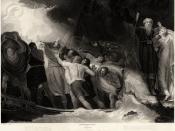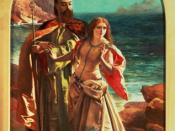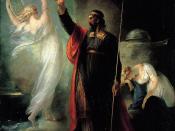In William Shakespeare's "The Tempest", slavery or servitude occurs in nearly every relationship with a man named Prospero. Prospero is able to control nearly everyone on the island and almost mesmerize them to do whatever he wants. He is also able to control many of them in their thinking as well.
First and foremost, the most obvious enslavement is that of Ariel. We learn that Ariel, a spirit, was held captive and that Prospero rescued him, but with an agreement. Prospero rescued Ariel only if Ariel would remain Prospero's servant. Prospero uses Ariel's confinement as collateral to make him his servant.
The next enslavement is that of Prospero and Caliban. Caliban is a beast from Africa and came with his mother, Sycorax, who was a witch. Caliban was the first inhabitant of the island and therefore believes it to be his. Caliban showed Prospero the entire island when Prospero first came to the island and wants to get revenge on Prospero even though Prospero is, in retrospect, his master.
Caliban and Prospero can be seen as similar, but no matter how hard Caliban tries to be tough with Prospero, Prospero always wins by means of his magic. Prospero's motive for holding Caliban in servitude is defined by Caliban's attempted rape on Prospero's daughter Miranda. Prospero uses this as collateral to get what he wants.
A not so obvious enslavement is the relationship between Alonso, the king of Naples, and Prospero. Alonso is no longer in Naples but instead on Prospero's island. Therefore he is trapped and under the control of Prospero provided that he remains on the island. In act three, scene three, lines 95-102 Alonso actually announces his lack of control and power on the Island and grants it to Prospero. "O, it is monstrous, monstrous!...



Good work
This is a nice analysis of the slavery/ servitude theme in the tempest but there should be reference with Caliban and the tempests Colonialism theme.
0 out of 0 people found this comment useful.